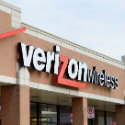
LONDON -- 5G World -- The 5G business case makes a lot more sense in the US than it does in Europe, according to Verizon Wireless boss Ronan Dunne -- a man who has worked for operators on both sides of the Atlantic.
Dunne, who led UK mobile operator O2 before crossing the pond, already has more 5G spectrum than most of Europe's operators combined. He's also providing "all-you-can-eat" services to Verizon's data-hungry customers, and they're gobbling it up. The average subscriber on one of those unlimited tariffs uses about 40 gigabytes a month, Dunne told attendees at 5G World during a panel session here today.
That makes a capacity boost an obvious initial 5G "use case" in the US market. "I have data traffic growing at 35% to 40% per annum and in those circumstances the first use case is that it is a high capacity boost and a much lower bearer cost for supporting that growth," he said on stage this morning. "That may not be the case in some other countries, but I will make a small bet that unlimited is coming."
While some European operators are still waiting for local regulatory authorities to run 5G auctions, Verizon already claims to hold as much as 1,000MHz of "contiguous" spectrum across the 28GHz and 39GHz bands. It means that in any square mile Verizon can transport more than 10 terabytes of data at any one time, offer download speeds of up to 15 Gbit/s and support about 1 million connected devices with a return-path signaling delay of less than 10 milliseconds, Dunne boasts. "Most operators in Europe are lucky to have 20MHz paired in any part of their spectrum range," he said, sounding like a man who is glad to have seen the back of the UK telecom market.
Globally, the industry has made a big deal of 5G as a more efficient technology than its predecessors. It is, according to equipment vendors, about ten times more "spectrally efficient" than 4G, and so the 5G "cost per bit" is around a tenth that of 4G.
That doesn't mean operators will see a massive reduction in their operating costs when they switch on 5G networks -- not unless they slash jobs and other overheads, that is.
But it should help them to keep operating costs under more control as data traffic continues to escalate. If virtual reality gaming and other "immersive" applications become daily 5G activities, then a subscriber consuming 40 gigabytes a month could fall into the light-user category just a few years from now.
From Verizon's perspective, the other big attraction, of course, is fixed wireless access -- the opportunity to support residential broadband services using 5G rather than a fixed-line technology. With Verizon's residential fiber networks largely unavailable outside the northeast of the US, the operator sees 5G as an economical way into new broadband markets. "Outside our existing broadband footprint, it will allow us to cover 30 million homes using the same investment for 5G mobile, and so my business case is better," said Dunne.
Want to know more about 5G? Check out our dedicated 5G content channel here on
Light Reading.
That's all very well, but detractors say millimeter wave spectrum is useless over long distances and that it struggles to get through walls or even cope with poor weather. The only way around this, they say, is to build out more sites -- a lot more sites -- at considerable expense.
Dunne is having none of it: "We launched in the first residential broadband market last year and there is proof that millimeter wave works in rain and snow and goes past leaves on trees," he said. Because Verizon introduced that service using a pre-standardized 5G technology (5G TF), he's also determined to address lingering concern that an upgrade to the standard will prove costly. "The release of the standard out there today is so close to TF as to make almost no difference to the investment we have made," he said.
Concern about the number of cell sites required with a millimeter wave deployment is likely to persist. Even with a mid-band 5G network in an urban environment, an operator may need "a lot of basestations" to support a good service, said Gabriel Brown, a principal analyst with Heavy Reading, during a separate panel session later in the day.
But for some of Europe's biggest operators, the spectrum question is still academic. "We need to make sure every country is allocated mid-band before the next 5G World," said Arnaud Vamparys, the senior vice president of radio networks for France's Orange.
Related posts:
— Iain Morris, International Editor, Light Reading
Read more about:
EuropeAbout the Author(s)
You May Also Like












